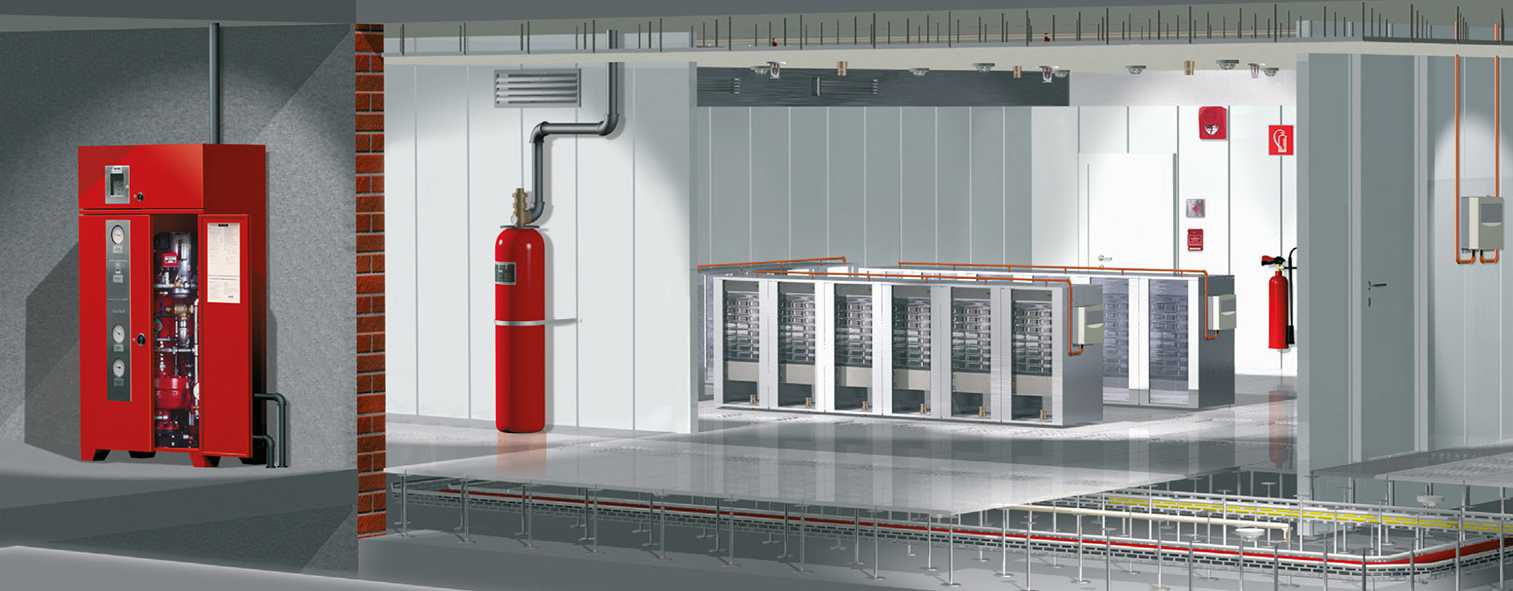The first step in designing a warehouse fire suppression system is risk analysis. It is necessary to consider the type of warehouse, the materials stored, their flammability, and the characteristics of the surrounding environment. For example, warehouses storing flammable substances require more powerful fire suppression systems.
The next step is choosing the appropriate fire suppression system. There are several main types of systems, including automatic water spray systems, smoke ventilation systems, foam, or powder systems. Each of them has its advantages and disadvantages, and the choice depends on the specific conditions of the warehouse.
When designing a fire suppression system, it is also necessary to consider legislative requirements and safety standards. For example, NFPA (National Fire Protection Association) and other international standards set requirements for the design, installation, and maintenance of fire suppression systems.
After selecting the type of system, the next step is to develop a detailed installation plan. This includes determining the optimal placement of smoke and heat sensors, distribution of spray nozzles, and installation of control and monitoring systems.
Installation of the fire suppression system should be carried out by qualified specialists using high-quality equipment and materials. Each stage of installation must be carefully planned and checked for compliance with safety standards.
Another important aspect is training staff in operating the fire suppression system and conducting regular checks and testing to ensure its reliable operation.
Delving into some aspects of designing and installing warehouse fire suppression systems, additional important points can be considered.
1. Risk Identification:
It is important to conduct a thorough risk analysis, considering not only the characteristics of the warehouse but also the features of the stored materials. This may include assessing their flammability, toxicity, and potential environmental hazards.
2. Integration with Other Systems:
Fire suppression systems often need to be integrated with other security systems, such as fire alarm systems, access control systems, and video surveillance systems. This provides a comprehensive approach to security and allows for effective response to emergencies.
3. Compliance with Local Regulations and Standards:
Each country and region has its own regulations and standards in the field of fire safety. When designing and installing a fire suppression system, all local requirements and mandatory standards must be taken into account.
4. Maintenance and Servicing:
After installing the fire suppression system, regular maintenance and checks are necessary. This includes checking the operability of equipment, replacing consumables such as batteries, and testing the system for functionality.
6. Staff Training:
All warehouse staff should be trained in proper fire response and the use of fire suppression equipment. This includes evacuation training, knowledge of the location of fire extinguishers, and other equipment.
Additionally, some technical aspects that play an important role in designing and installing warehouse fire suppression systems can be considered.
1. Choice of Sprinkler Type:
Sprinklers in fire suppression systems can be of various types depending on requirements. For example, for areas with high temperatures, quick-opening sprinklers may be chosen, while for areas with high humidity, corrosion-resistant sprinklers may be selected.
2. Consideration of Warehouse Construction Features:
The structural features of a warehouse space can influence the choice and installation of a fire suppression system. For example, ceiling height, the presence of partitions, and shelves must be considered when determining the placement of sprinklers and sensors.
3. Backup Power Systems:
To ensure continuous operation of the fire suppression system in case of power outage, installation of a backup power system such as emergency generators or batteries may be required.
4. Monitoring and Control Systems:
Monitoring and control systems allow for timely response to fire alarm signals, monitoring the operation of the fire suppression system, and diagnosing faults.
5. Use of Innovative Technologies:
With the advancement of technology, new opportunities arise to improve the efficiency of fire suppression systems. For example, the use of intelligent algorithms for analyzing sensor data can help prevent false activations of the system.
Integrating all these aspects into the design and installation process of a warehouse fire suppression system allows for the creation of a reliable and efficient fire protection system. This is essential for ensuring the safety of personnel, property preservation, and uninterrupted warehouse operations.
Further, delving into the topic of a proactive approach to warehouse safety:
1. Evacuation Plans and Staff Training:
Developing and implementing evacuation plans help minimize risks to personnel in case of fire or other emergencies. Staff training on behavior rules in such situations and conducting training exercises play a key role in effective response.
2. Detection and Automatic Notification Systems:
Installing modern smoke, heat, and gas detection systems allows for prompt fire detection and automatic activation of the fire suppression system, minimizing the delay between fire occurrence and suppression initiation.
3. Use of Intelligent Management Systems:
Integration of intelligent management systems allows for automatic analysis of sensor data and decision-making on fire suppression system activation based on pre-fire conditions, enhancing efficiency and reducing the risk of false activations.
4. Regular Checks and Maintenance:
Regular technical checks and maintenance of the fire suppression system ensure its reliable operation under any conditions. This includes checking the condition of equipment, replacing worn parts, and conducting functional tests.
5. Incident Analysis and Continuous Improvement:
It is important to analyze any incidents or activations of the fire suppression system to identify causes and take measures to prevent their recurrence in the future. Continuous improvement of processes and technologies plays a key role in ensuring warehouse safety.
Applying all these approaches in the design, installation, and maintenance of a warehouse fire suppression system helps create a highly efficient security system that ensures the protection of personnel, property, and business as a whole.
Effective design and installation of a warehouse fire suppression system are an investment in personnel safety, equipment, and property. Adherence to modern standards and the use of advanced technologies enable the creation of reliable fire protection and minimization of potential risks.
| Order a service for the design or installation of fire suppression systems

